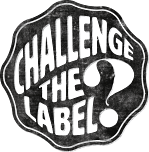With so much focus on “good” organizations – the B Corps, the LEED-cerified buildings, and the startups aiming to change the world with the newest and brightest innovation, it’s easy to forget about the unexpected ones. Sometimes, the huge companies that get conventional attention (focusing on profit) get left out of talks on sustainability. I’ve definitely done this plenty of times – dismissing corporate giants and their green claims as misleading or greenwashing before even understanding what kind of (positive) impact they actually could have.
This leads me to wonder if my skepticism (or perhaps cynicism is more accurate) is just a self-fulfilling prophecy…
Is a cycle of waste and a culture of overconsumption happening because we’re not encouraging the big players enough when they try to make a positive change? Maybe they need a little pat on the back sometimes to let them know that we acknowledge their efforts. However, this doesn’t mean we should go applauding every “green” action a large company does – I bet you’d feel just as uncomfortable as I do (if not, more) by doing that.
So, what do we need in order to believe a sustainability claim then?
According to the ISEAL Alliance’s “Challenge the Label”, there are 5 universal truths to good sustainability claims:
1. Clear
2. Accurate
3. Relevant
based on a system that is…
4. Transparent
5. Robust
They all seem pretty straight-forward for a company to follow, right? Basically, the first four truths state that the claims need to be truthful and not misleading, while ensuring that information regarding them is accessible. However, I think the last one might be the one thing that was keeping me from believing large corporations, especially.
Robust: “there are controls in place regarding when the claim can be used and by whom, and clear criteria to be met before a claim can be used”
Sometimes, when certifications aren’t applicable and there are no industry standards, we need to look at other sources of proving robustness.
“The Sustainable Apparel Coalition was born from a dynamic and unconventional meeting of the minds.”

“In 2009, Walmart, America’s biggest retailer and Patagonia, one of the world’s most progressive brands, came together with a radical mission: Collect peers and competitors from across the apparel, footwear and textile sector and together, develop a universal approach to measuring sustainability performance.”
I’m not sure about you, but I trust Patagonia and their commitment to sustainability. Of course, the ISO or another reliable standardization/certification organization, would be arguably better to “control” a claim. However, when Walmart’s initiative isn’t only backed-up by Patagonia, but was actually started in conjunction with them, it gives them that “robustness” that would’ve otherwise been missing.
In my opinion, the Sustainable Apparel Coalition not only built up Walmart’s brand of sustainability, but also Patagonia’s. It gave Walmart a leading edge on influencing sustainable practices in the apparel and textile industry, while gaining some trust off of Patagonia’s support. I believe it also built up Patagonia’s reliability by strengthening their appearance and influence on changing the norm, especially after they were having some trouble fulfilling their goal of influencing other companies regarding organic cotton use.
Sometimes genuine change come from the most unexpected collaborations.
Sources: